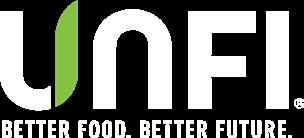

Case Study: Differentiation
A Guide to Standing Apart from Your Competitors

Executive Summary
Key Takeaways
How you can benefit from differentiation: By offering something unique to customers—value they can’t get anywhere else—independent retailers can stand out from larger chains and mass retailers. This point of differentiation builds brand loyalty, helps increase market share, and improves profitability—all keys to building sustained growth in a challenging industry.
Paths to differentiation: Whatever your approach may be, building a strong brand identity and thriving in a competitive market almost always starts with a great in-store experience. Atmosphere, cleanliness, and organization help you stand apart.
Success stories:
• W hen a large chain retailer opened across from one of Sherm’s Thunderbird Markets’ four Oregon locations, they partnered with UNFI’s Shelf Services team to remove slow-moving items and expand categories their shoppers loved.
• Hollywood Markets, a Detroit-area grocery chain, worked with UNFI’s Store Design and Shelf Services teams to reimagine a store location in a growing area, ensuring the new design serves their target demographic while showcasing their specialty meat department and customer service.

Build your competitive edge
There are many ways to differentiate an independent retailer, and finding the right path requires understanding your target consumers’ needs and aligning your capabilities to meet them.

Introduction
In the competitive grocery industry, differentiation is vital for independent retailers looking to stand out from mass/club retailers and local competitors. When margins are tight, trying to compete on price alone rarely works. With such tough competition, differentiation is key to an independent retailer’s success. While some consumers might think grocery retailers mainly compete on location, relying on physical setting alone isn’t sustainable, especially if a competitor moves in nearby.
Instead, successful independent retailers have carved out a position in the market that “distinguish themselves for the right reasons1.” There are many ways a grocer can differentiate themselves, but finding the best approach does take some work.
The good news? Setting yourself apart doesn’t need to be complicated. This article explores what differentiation means, how to assess your unique position, and strategies to build a distinct identity beyond just competing on price.
1.Why Differentiation Matters
What is Differentiation?
Differentiation means making your business distinct from competitors. It happens when you create a unique value proposition—giving customers something they can’t get elsewhere. For independent grocery stores, standing out this way leads to stronger customer loyalty, bigger market share, and higher profits. Unlike big chains, independent stores can use their local know-how and flexibility to meet specific customer needs, delivering products and experiences that national competitors can’t easily match.
While differentiation isn’t a new concept, the basics are worth reviewing. Without meaningful ways to stand apart, any retailer risks losing a crucial edge. Shoppers will see the store as just another option without a unique experience. When that happens, they become more focused on price. To customers, a store that doesn’t stand out is only worth visiting if the prices are low2 .
The Benefits of Differentiation
Retailers who clearly differ from competitors enjoy several advantages, but here’s why you should focus on making your store(s) distinct:
• Build Brand Loyalty: Store differentiation makes your business memorable. Shoppers connect your brand with their experience and its perks. The more unique your experience and the better it meets what your target audience wants, the more likely they’ll become regulars who prefer shopping with you.
• Less Price Sensitivity: Differentiation can boost your profits, sometimes significantly. You can typically charge more for a unique store experience because shoppers value those special qualities—as long as they align with their needs3.
1 Forbes, Strategies to Differentiate Your Brand and Own Your Industry, September 2021
2 Harvard Business Review, Marketing Success Through Differentiation—of Anything, January 1980
3 Intuit Marketing Library, What is Differentiation?, November 2024

The Role of Differentiation in Grocery Retail
For grocery retailers, differentiation often involves focusing on areas like product selection, store experience, and community connection. Your strategy should address what your target audience needs and wants. This helps build a loyal customer base that looks beyond just price. When you align with your target audience’s needs and carve out your unique market position, you can achieve sustainable growth 4
2.How Independent Grocery Retailers Can Find Their Edge
In traditional marketing models, pursuing a differentiation strategy involves using the segmentationtargeting-positioning (STP) framework that helps a company understand where they can best succeed in their market5. Because the full STP framework can be complex, UNFI has simplified this process specifically for grocery retailers:
Understand Your Target Consumer
Understanding your target consumer is key to delivering products, services, and experiences that connect with your specific market—your chosen differentiation strategy needs to resonate with your current or target shoppers. Needs and preferences vary widely across demographic factors, including age, gender, location, and parenting status. For instance, a UNFI study of 960 shoppers found that attitudes toward grocery products differ significantly based on factors like income and family stage6:
Grocery Product Attitudes
% somewhat/completely agree
4 Simon + Kucher Consulting, Understanding Differentiation Strategy, November 2023
5 Kotler, Kotler on Marketing: How to create, win, and dominate markets, June 1999
6 UNFI Primary Research, November 2024

Grocery Product Attitudes
Have children in HH
All others
Per this example, stores in areas with lots of families might consider offering larger pack sizes, featuring new products, and highlighting better-for-you or organic options. Since differentiation isn’t one-sizefits-all, knowing your shoppers helps guide where you can stand out.
Beyond knowing who your consumers are, it’s valuable to understand why they’re shopping. Not every shopping trip serves the same purpose. Are shoppers coming for their main grocery run, or do they see you as a fill-in or convenience stop? Your shoppers’ goals help shape how you should differentiate.
Here are some simple ways to understand your customers without breaking the bank:
Engage Directly with Customers: Talk with shoppers to learn about their preferences, product wishes, and satisfaction levels. Feedback cards or comment boxes can help reach customers who prefer sharing anonymously.
Focused Surveys: Use brief, targeted surveys in-store or online to learn about shopping habits, favorite products, and desired services. Consider offering small incentives, like discounts or giveaway entries, to boost participation. Social media polls can also quickly gather opinions on products, hours, or services.
Leverage Your Employees: Your front-line team members, who interact with customers daily, often have great insights into what drives satisfaction or frustration. Regular employee check-ins can provide valuable feedback.
While surveying might seem daunting, starting with basic information helps. Try to understand these key points through surveys or conversations:
1. What matters most to shoppers? Why do they choose your store? Are there specific features that drive their choice?
2. What kinds of shopping trips happen at your store? Are people doing fill-in trips or major stock-ups?
3. What drives them to buy (or avoid) certain products, categories, or brands?
4. Which other grocery stores do they visit, and why?

Conduct a Self-Assessment
Understanding what your customers want is only the first step—you also need to know how customers view your brand and what your core capabilities are. Retailers should evaluate their market position and internal strengths to determine how to maximize their value to customers. Here are some assessment steps:
SWOT Analysis: Often called situational analysis, this common marketing framework has your team review internal factors (Strengths and Weaknesses) you can control and external factors (Opportunities and Threats) outside your control. These four elements help you plan how to use strengths against threats or minimize weaknesses to capture opportunities7
Competitor Analysis: Similar to your internal SWOT analysis, review nearby competitors, both independent and chain stores, to understand their strengths and weaknesses compared to your store.
Sales Data Review: Look at sales data to gain insights into product performance, customer demographics, and shopping patterns that reveal unique preferences.
Evaluate Brand Identity and Customer Perception: Understanding how customers see you is crucial. Analyze customer feedback about specific aspects like shopping experience, customer service, and product quality.
3. Ways to Differentiate Beyond Price
If your customer and store assessments show an opportunity to distinguish yourself from competitors, there are several areas where independent grocery retailers can shine compared to mass/club competitors.
The following list offers some thought starters and examples of proven ways to differentiate beyond price or location. Remember, these distinguishing features need to connect with your customers and align with what you can execute well.
Product Assortment, Selection, and Sourcing

• Description/Impact: Focus on specific products and supplier partnerships to attract customers who value these choices.
• Examples: High-quality, organic, natural, locally sourced, unique/specialty or international products are proven options. New product trends, prepared foods, or emphasis on premium quality or fresh produce also fit here.
Customer Service
• Description/Impact: Excel in exceptional service, knowledgeable staff, in-store dining, and engaging store layouts to build a loyal customer base willing to pay more for a better shopping experience.
• Examples: Quality employee/customer interactions, community involvement, customer loyalty programs.
7 White, How to Perform a SWOT Analysis for Your Business, July 2024

Technology and Convenience Innovations
• Description/Impact: Use technology to enhance customer communication, like personalized recommendations through online platforms. This appeals to tech-savvy shoppers and makes shopping easier.
• Examples: Self-checkout or check-out free shopping, website & app/digital and mobile ordering, personalized marketing.
Sustainability or Wellness Initiatives
• Description/Impact: Clear commitments to initiatives like carbon-neutral operations attract environmentally and socially conscious shoppers.
• Examples: Health-Focused Services, clean label and allergen-friendly sections, commitments to recyclable packaging or ethically sourced suppliers.
Finding your Path
There’s no single “right” way to differentiate—the options above are just starting points, not a complete list. Success comes from understanding your customers’ needs, knowing your capabilities, and seeing where your competition stands. From there, you can build a differentiation strategy that works for your business.
Whether you compete through fresh-made meals, customer experience, private labels, or a local focus, most successful differentiation strategies share one thing: a great in-store experience.
In-Store Experience
The in-store experience covers everything customers encounter from entry to exit, and it’s crucial for delivering what shoppers want. No matter how you choose to stand out—through product selection, wellness focus, or other areas—a positive in-store experience is essential for building customer loyalty, driving sales, and strengthening your brand image8.
Below are some general best-practices that can help provide a strong in-store experience9:
Create a great first impression: Make your mark from the start with an organized, clean exterior and checkout area:

• Parking Lot: Keep signage clear and clean. Stay on top of lighting, paint touch-ups, and ensure good outdoor lighting for safety. Consider adding curbside pickup and EV chargers to stand out.
• Customer Service Desk & Checkout Lanes: Use clear signage, keep areas organized, and staff appropriately for each day and time.
8 Kroger, What’s in store for in-store experiences, 2024
9 AlixPartners, Independent Grocer’s Guide V2, 2023

Design Your Layout For Smooth Flow: While smart layouts boost basket sizes, they’re also key to a great store experience. Use displays to create an appealing look, organize shelf space efficiently, and allocate space based on sales data. Clear, consistent signage helps shoppers find what they need quickly while spotlighting products.
Create a Sensory Experience: Shopping should engage all five senses. From welcoming shoppers with fresh bakery or floral scents at the entrance to choosing music that resonates with your customers, every sensory detail matters.
Given the in-store experience is such a broad subject, here are a few specific questions you and your staff can discuss to help uncover areas of opportunity:
• Is shopping in your store enjoyable and efficient?
• Does your store feel inviting, fresh, and well-lit?
• How well do you maintain floors, aisles, and bathrooms throughout the day?
• Are you regularly checking and updating store signage?
• How does your role in the community show up in the shopping experience?
• How often do you inspect the store exterior, including cart areas and parking lot?
Here’s a Crucial Insight: Store cleanliness tops the list of shopper priorities. UNFI’s research shows 39% of surveyed shoppers rate cleanliness as extremely important when choosing where to buy groceries10
Importance of Store Experience Factors

UNFI Solutions for the Store Experience
Shelf Services
As noted previously, product assortment is a great way to differentiate your store. To help ensure you are offering the right mix of products and placing them strategically, UNFI’s Shelf Services team offers an endto-end solution for your category management and assortment needs. Services include:
Store Mapping: An aisle-by-aisle analysis of how products move through your store, combined with market data and category trends. UNFI then utilizes this data to identify top-performing categories, identify “hot & cold” store sections, define category adjacencies, create planograms, and provide optimal category adjacency flow based on consumer shopping trends. These outputs allow you to leverage your physical floor space to promote an optimal store layout.
• The End Result: An optimized store layout that makes shopping easier and helps boost sales per square foot.
Assortment Insights (Scan Advantage): Optimizes your product mix with unbiased brand assortment and data analysis. Metrics provided include sales performance benchmarks, product assortment reviews, and comparisons to similar stores and overall market performance.
• The End Result: Clear insights into how your store performs versus the market and where to expand your selection.
Planograms: Strategic merchandising recommendations based on consumer data, regional market trends & store insights. UNFI can provide base planograms (assortments based on product mix from UNFI distribution centers) as well as custom planograms (integration of your store’s unique POS data to customize category, item and product mixes).
• The End Result: Visual guides to help stock the products your shoppers want.
Retail Execution & Field Sales: Support for implementing assortment and planogram recommendations, plus merchandising and sales support.

• The End Result: Bridge the gaps between assortment planning/merchandising and execution for success.
Store Design
A store’s design plays a crucial role in creating a meaningful shopping experience. UNFI’s store design and equipment experts can help enhance or create your brand image through remodels or new builds, while focusing on what matters: community connection, sales growth, and sustainability. Our Store Design team brings deep expertise in grocery layouts for all store formats, offering:
• Project management support
• Requirement drawings

• Refrigeration design
• Equipment recommendations
• Interior design services
The End Result: Save time and money while bringing your vision to life, whether for a new store or remodel.
Success Story: store remodels have shown potential to boost overall sales by 8% or more11.
Case Study: How Store Experience Made a Difference for These Grocery Retailers
Sherm’s Thunderbird Markets faced competition when a large grocery chain opened across the street from one of their four Oregon locations. Working with UNFI’s Shelf Services team, they refreshed their approach: removing slow movers and expanding popular categories like prepared meals, value products, private label items, and larger pack sizes.
“We knew it was time to shrink some of our selections and expand on those that really serve our customers.” -Bob Ames of Sherm’s.
Using UNFI’s store mapping and assortment insights, they found ways to optimize their offerings and space usage. They added a full aisle of club packs and institutional items, showcased their selection breadth, and highlighted their private label offerings. Store sales and customer feedback show these updates have enhanced their shopping experience and market position.
“[Working with UNFI’s Shelf Services team has] definitely kept us competitive [in our market]. We do a much better job than our competition on private label, and [UNFI’s Shelf Services team] did a great job getting those products in the right places so our customers can see the value of them. We also typically carry a lot more SKUs than other retailers so for us, giving the customer that selection is key and that’s one of the things they really helped us do, was organizing our products in such a manner that it calls out the sheer size of the selection we offer.” -Dack Doggett of Sherm’s.
Hollywood Markets, a Detroit-area grocery chain, partnered with UNFI’s Store Design and Shelf Services teams for a complete store redesign in a growing area. They saw an opportunity to serve their target demographic while building on their strengths in specialty meats and customer service.
“Being able to utilize both conventional and natural data from UNFI was really important for us and very helpful [in optimizing our store layout]. Over the past few decades, we’ve really gotten into specialty products because they complement our meat department. […] Our customers want quality meats and deli products and great customer service. Because price isn’t our top focus like a lot of the mass retailers out there, we need to make sure we have the right product mix to complement those focus areas.” -Andy Welch of Hollywood Markets.

Aside from this success in the meat department, Hollywood Markets has found an opportunity to differentiate by tailoring their experience to younger families while serving their established customers.
“Our target customer is younger families who are building their lives with their children. It can be hard to capture this group—they’re on the move, they’re taking the kids to sports practices and activities, but are still making an effort to eat together at home. Listening to these customers is key for us, and making sure we meet their needs by offering new, fresh, exciting products as well as grab-and-go or more convenient options. However, a large portion of our existing customers want a more service-oriented experience, so we need to make sure we’re taking care of both of those customers. […] What makes [Hollywood Markets] us is our ability to create long term relationships with customers and make sure we provide them with the products they want and need.” -Andy Welch.
Build Your Competitive Edge
Differentiation is an ongoing journey that requires knowing your customers and adapting to their changing needs. For independent grocers, success comes from understanding your community, tailoring your offerings, and delivering great service and experiences. These strategies help build lasting competitive advantages and customer loyalty.
For More Information on how UNFI can help you differentiate your business, please contact submit an inquiry to our Professional Services team.
Have a Topic Suggestion or Want to Provide Feedback?
Did you find this article helpful or lacking? Or would you like to provide a topic that we can cover in the future? Please take our short survey
Credits
Research & Intelligence
• Nathan Tuggle, VP Corporate Marketing
• Neil Savage, Marketing Insights
• Zoë Listro, Marketing Insights
Editorial
• Matt Eckhouse, President Digital & Professional Services
• Nick Walker, VP Strategic Business Intelligence
• Kris Novitzki, Store Services
• Jeff Miller, Store Services

